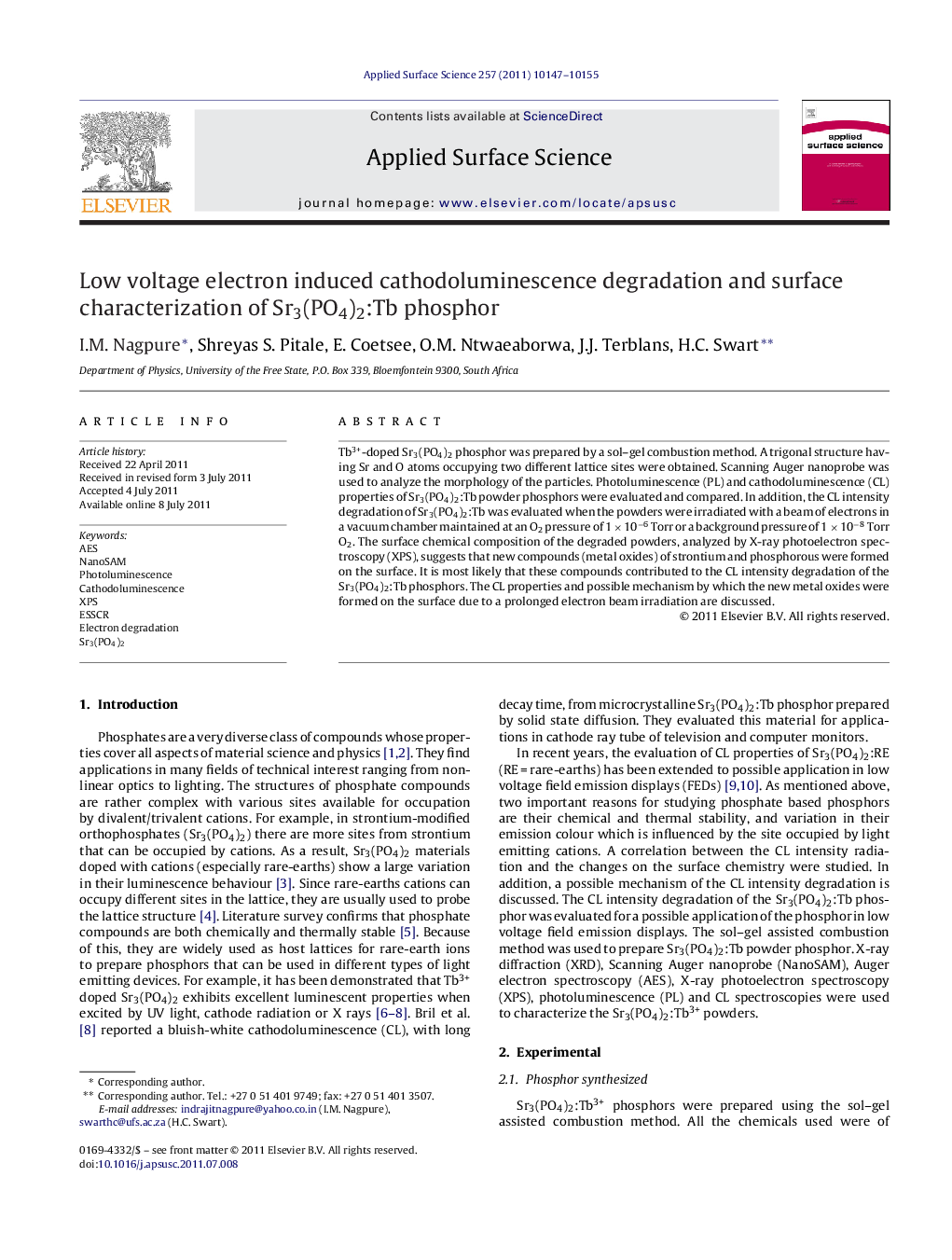| Article ID | Journal | Published Year | Pages | File Type |
|---|---|---|---|---|
| 5367405 | Applied Surface Science | 2011 | 9 Pages |
Tb3+-doped Sr3(PO4)2 phosphor was prepared by a sol-gel combustion method. A trigonal structure having Sr and O atoms occupying two different lattice sites were obtained. Scanning Auger nanoprobe was used to analyze the morphology of the particles. Photoluminescence (PL) and cathodoluminescence (CL) properties of Sr3(PO4)2:Tb powder phosphors were evaluated and compared. In addition, the CL intensity degradation of Sr3(PO4)2:Tb was evaluated when the powders were irradiated with a beam of electrons in a vacuum chamber maintained at an O2 pressure of 1Â ÃÂ 10â6Â Torr or a background pressure of 1Â ÃÂ 10â8Â Torr O2. The surface chemical composition of the degraded powders, analyzed by X-ray photoelectron spectroscopy (XPS), suggests that new compounds (metal oxides) of strontium and phosphorous were formed on the surface. It is most likely that these compounds contributed to the CL intensity degradation of the Sr3(PO4)2:Tb phosphors. The CL properties and possible mechanism by which the new metal oxides were formed on the surface due to a prolonged electron beam irradiation are discussed.
Graphical abstractDownload full-size imageHighlights⺠A simple and cost effective gel-combustion reaction was adopted to prepare terbium doped Sr3(PO4)2 phosphor. ⺠Stable bluish-green cathodoluminescence was observed from Sr3(PO4)2:Tb3+ phosphor. ⺠The long term columbic aging and luminescence output was monitored under a continuous 2 keV accelerated electron flux. The in situ surface concentration changes were probed using Auger electron spectroscopy, reveals surface concentration modification of Sr, P and O atoms. ⺠Ex situ surface chemical analysis using X-ray photoelectron spectroscopy reveals the formation of a sub-stoichiometric SrO and P2O5 layer due to electron stimulated surface chemical reactions (ESSCRs) on the surface of the Sr3(PO4)2:Tb phosphor. ⺠The relative contribution of the individual degraded and undegraded species is differerent for the two pressures and the presence of a small amount of metallic P on the surface might played an important role in the surface conductivity, this layer is possibly contributing to the surface chemical stability and prevents further degradation.
